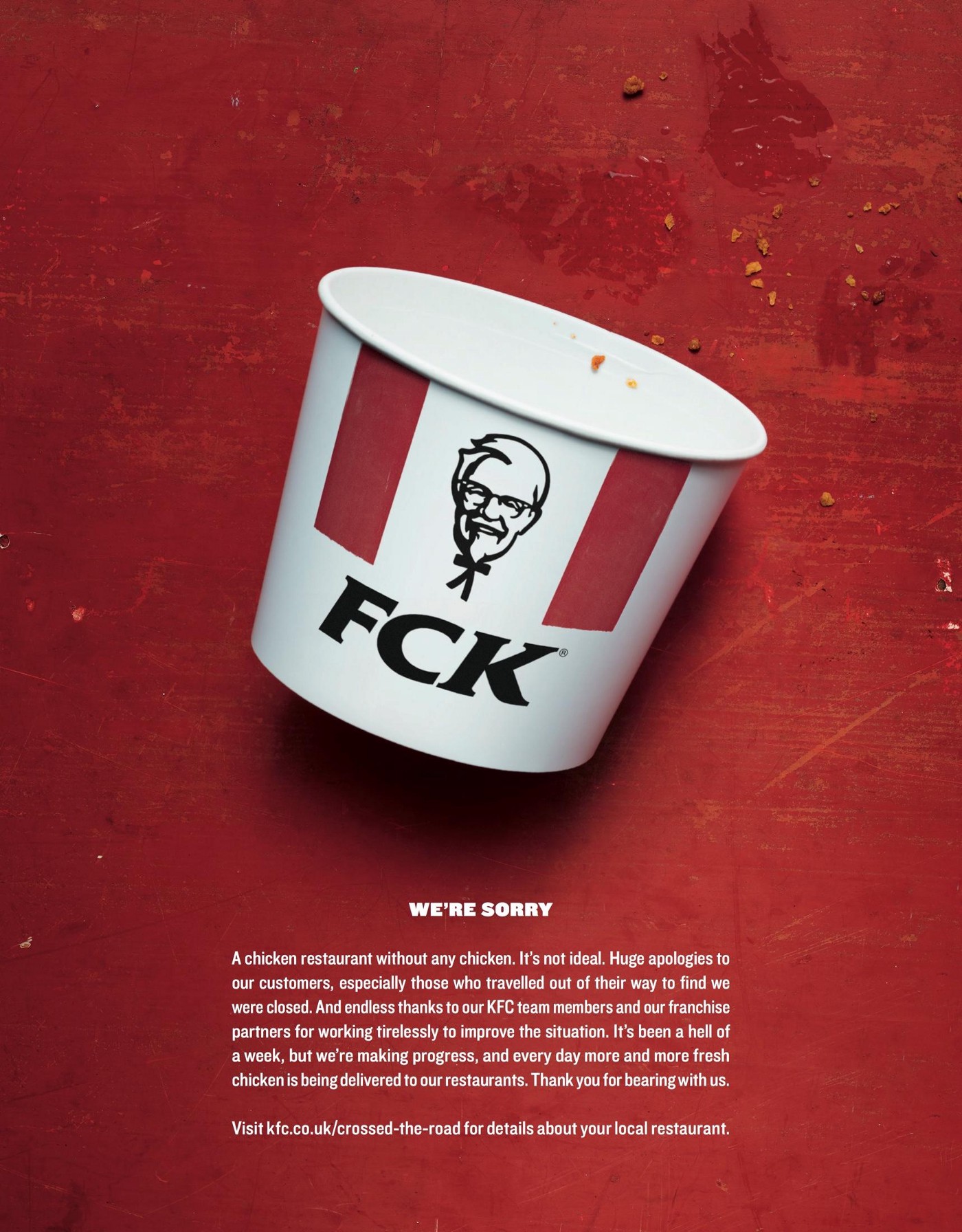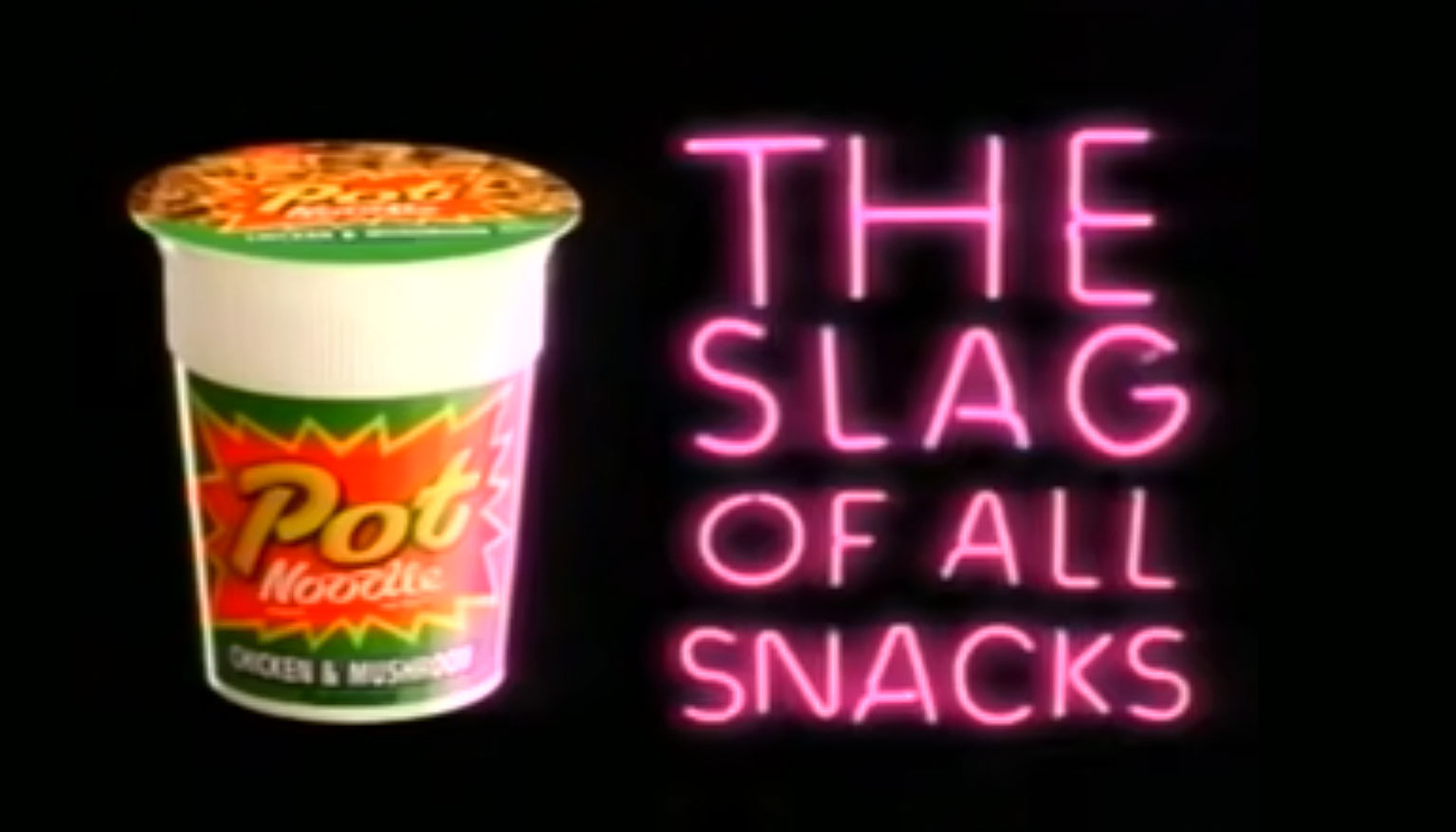What the f**k has happened to our advertising?

At the risk of sounding like Mary Whitehouse, I’m not a fan of the overuse of swearing in British press, TV and film. Most comedians slip in the f-word almost as often as they exhale, throwing in an incessant smattering of coarse language to express opinions on sex, our body parts or bodily functions, all in place of intelligent humour. I’m not someone who finds swearing just for the sake of it funny – unless it catches you off guard on Countdown.

And it seems advertising is playing by the same rules. Some language just works harder to gain cut through, to slap someone round the face and say, ‘read this!’ So, it’s understandable that brands wanting to gain attention sometimes use shock tactics to get that attention.
In a world where every piece of communication has to earn likes and engagement, does it matter what language we use to attract that attention if it works?
To advertisers and marketers, yes it does.
Why brands should give a sh!t
Swear words are full of emotion and power.
Swear words are emotive and successful advertising usually engages us on an emotional level, so it makes sense that advertisers and marketers have considered using the odd f-word.
Anyone who has visited a relative suffering from dementia may have been shocked if their previously sweet-natured grandparent starts using a foul turn of phrase. Dementia sufferers swear because as memory goes, the limbic system (which feels emotion) is retained long after familiar names and faces have faded. Highly emotional words, commonly swear words, enable sufferers to feel and express emotion when words fail them, such is the power of swearing.
Even the mildest mannered amongst us might use swear words to add drama and intensity to the moment, especially when expressing sudden extremes of emotion like pain. Who hasn’t sworn when stubbing a toe, having dropped a glass or crashed the car? We’ve all been there. The air turns blue and we feel a bit better – in fact, swearing has been proven to relieve pain. When we hear others swearing in reaction to pain or disaster, we can therefore relate to the experience.
Swearing can be relatable and feel real, and brands want to be relatable.
Keele University psychologists proved that using conventional swear words can increase your pain tolerance by 33% compared to using alternative language.

Remember when KFC ran out of chicken? They issued a rather surprisingly honest and raw apology. Yes, they swore, but in a clever and child-safe way, so wasn’t offensive. The brand was having fun, using less than savoury language to explain their lack of savoury chicken. KFC was laughing at their own expense, latching onto a pain point, and admitting to having f’d up royally – all in a way their audience could relate to.
Swearing doesn’t always go down so well.
Swearing in advertising should always be done with caution though. Volkswagon’s 2007 ‘Bollocks’ advert used the term again and again, and it came from the mouth of a child. It may have been a play on the familiar joke that children repeat what they hear, but the ad triggered a barrage of complaints to Ofcom, and was ultimately banned.
The word in question has been rated as ‘Medium’ on a scale of offensive language devised by Ofcom, and by using it Volkswagon badly misjudged their audience and what they deemed appropriate. Any advert that fails to be true to the brand values is also in trouble. Today, Volkswagon’s first value is Responsibility: ‘We are part of society. We take on social responsibility.’
So how do brands optimise bad language without causing offence?
Swearing is becoming increasingly normalised, according to research carried out for the British Board of Film Classification (BBFC). However, there is a clear divide between generations, with 18-34 year-olds most likely to accept swearing as a normal part of everyday life.
If the age group and social demographic of your target audience aligns with your brand, then it’s far easier to make use of this emotive language. There are some common tricks that brands targeting this audience often adopt to avoid censorship.
Anagrams and double-entendres
We all love a double-meaning, it can be amusing and make us feel clever at having got the joke. French Connection took the idea to new levels, not merely content with a campaign they rebranded with an almost expletive. The rebrand came about after a fax was received from their Hong Kong offices. The header read, ‘FCHK to FCUK’.

Sound-alike swear words
Swapping an offensive word for one that sounds similar can make it more palatable. It’s a tactic repeatedly adopted by holiday companies Booking.com and On the Beach.
Booking.com got away with it because ‘booking’ was said clearly and distinctly. And because they were using emotion and physical emphasis when saying the word ‘booking’, even though they weren’t actually swearing the viewer was in their head. Remember, if it sounds offensive, then chances are it is meant to be offensive. But maybe the cheap package holiday market’s opinion mattered more to the brands than mass appeal.
In contrast, On the Beach’s post-covid ‘It’s ready when you are’ advert, made people want to hit the beach, without the need for bad language, by playing to our emotions in an honest and timely way.
Self-censoring
Another solution is to self-censor. One way to do this is to replace offensive words with random soft words to express passion or pain, words that could be uttered in the presence of innocent ears.
We can also self-censor by removing the word completely by beeping, blacking out text, or adding asterisks. Just don’t expect it to work in the same way. These softer or invisible words don’t shock us, because we don’t use them on the same expressive level.
That means that uttering ‘biscuit’ instead of ‘b**ger’ or ‘b**tard’ simply doesn’t cut the mustard. But that’s not to say these self-censored words shouldn’t be used. They can still show humour, and be relatable in their own way. After all, “Australians wouldn’t give a XXXX for anything else.”
Mind your language!
UK advertising, in print and online, has to meet stricter guidelines than film and TV programmes when it comes to bad language. That’s because you can’t control when it is seen, or by whom. These rules can lead to even softer forms of semi-swearing being axed.
An advertising campaign for Tesco Mobile which used the names of foods as substitutes for expletives was trying to portray customer frustration, but the Advertising Standards Authority (ASA) said, “their use of words like ‘shiitake’ and ‘pistachio’ was likely to cause “serious and widespread offence.”

So, does this mean that none of us can take a light-hearted, tongue-in-cheek, playful approach to swearing in advertising? Thankfully, no. But it does depend on adverts being audience appropriate and being aware of their reach. Tesco Mobile’s campaign was banned from billboards, but was deemed suitable for Daily Mail and Express readers.
The worst words
Advertising that uses bold and effective swearing can be entertaining, arouse emotion, achieve notoriety and create stand-out in a crowded marketplace. Mild swearing has been shown to raise the persuasion level of messages and build connections within a core market, but go too strong and swearing can also be divisive.
Our attitude to swearing is changing, as language is. Rude words for our bodies and what we do with them are generally far less offensive than they once were (not including the c-word). The Collins English Dictionary has downgraded 54 words from “taboo” to “slang” or merely “informal”, including bollocks and gangbang, and it’s not unusual to hear ‘shit’ in a 12-rated film at the cinema. But there are still limits to acceptability.
Pot noodle went too far, with their Slag of all snacks advert. The sexual angle taken and the language used caused outrage.

Swearing has always been considered rude or offensive. But some words are still, quite rightly, far more offensive than others. Advertising can still be edgy and speak like their audiences do, without insulting anyone or using the worst words out there. If it’s appropriate and acceptable to your target audience and in line with your own brand values, then why not. But for f***s sake, make your advertising engaging.
Do you need help making you advertising engaging? Get in touch – we’d love to help. Alternatively, for the latest marketing and branding news, take a look at our Articles page.